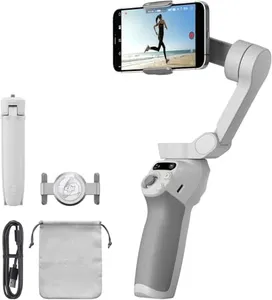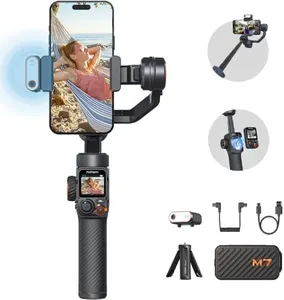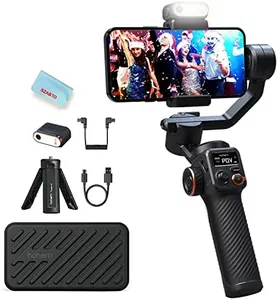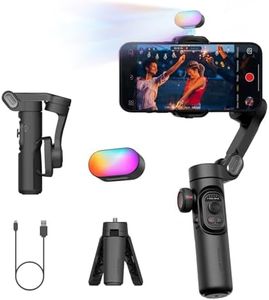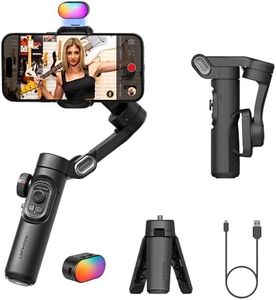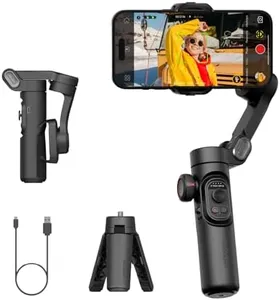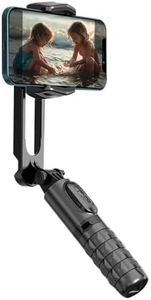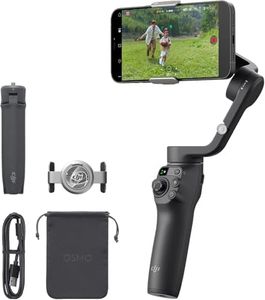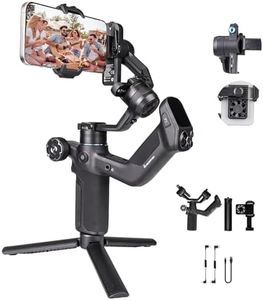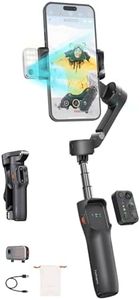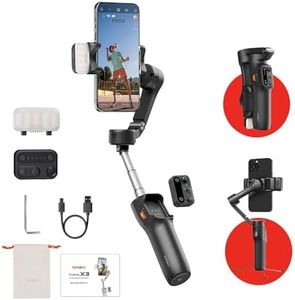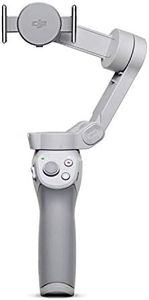We Use CookiesWe use cookies to enhance the security, performance,
functionality and for analytical and promotional activities. By continuing to browse this site you
are agreeing to our privacy policy
10 Best Handheld Iphone Stabilizer
From leading brands and best sellers available on the web.Buying Guide for the Best Handheld Iphone Stabilizer
Choosing a handheld iPhone stabilizer can make a big difference in the quality and smoothness of your videos, especially if you often shoot on the move. The stabilizer, also called a gimbal, helps keep your phone steady, reducing shakiness and making your footage look more professional. To find the best fit for your needs, it's important to understand the core features and how they relate to your filming style and goals.Stabilization AxesStabilization axes refer to the directions a gimbal can compensate for movement. Basic models offer 2-axis stabilization, which helps reduce shakes from side-to-side and up-and-down movements. More advanced models provide 3-axis stabilization, which also compensates for rotation and twisting—resulting in much smoother video. If you often walk, run, or film dynamic scenes, 3-axis models deliver the best results. For simpler uses like vlogging or stationary shots, 2-axis might be sufficient and lighter.
Payload CapacityPayload capacity is the maximum weight the stabilizer's motors can handle. This is important because if your phone—especially with a case or extra accessories—exceeds this weight, the gimbal can't properly stabilize it. Lighter-duty models are meant for bare phones, while heavier-duty ones support additional attachments like lenses or microphones. Know the weight of your fully rigged phone setup to select a stabilizer that can handle it reliably.
Battery LifeBattery life tells you how long the stabilizer can operate before needing a recharge. If you plan to film for long periods or travel without easy access to power, longer battery life is crucial. Some stabilizers last just a few hours, while others can run all day. Think about your typical shooting sessions and how often you can recharge to decide what’s sufficient for you.
Portability and FoldabilityPortability refers to how easy it is to carry the stabilizer around, and foldability means whether it can collapse into a smaller form for storage. If you travel often, work in tight spaces, or just want to throw your stabilizer in a small bag, smaller and foldable models are best. However, these might sacrifice some sturdiness compared to bulkier, more rigid designs. Consider how much you’ll be carrying it and where you’ll be shooting to choose the right balance.
Controls and App IntegrationControls include the physical buttons or joysticks on the stabilizer handle that let you move your phone, start recording, or switch modes. App integration means the stabilizer works with specific software on your phone for features like face tracking, motion time-lapse, or editing. If you want creative filming modes or easy access to advanced features, look for models with good app support and user-friendly controls. Simpler models might have only basic controls, which can be fine if you want a no-fuss experience.
Build Quality and ComfortBuild quality explains how sturdy, durable, and comfortable the stabilizer is in your hand. If you'll use it for extended periods, look for ergonomic handles and quality materials that prevent fatigue and resist wear and tear. Some models use plastic to stay light, while others use metal for durability. Think about where and how often you’ll use the stabilizer—if it's mostly indoors or for quick clips, lightweight plastics are fine. For heavy-duty, outdoor, or all-day filming, stronger construction is better.
